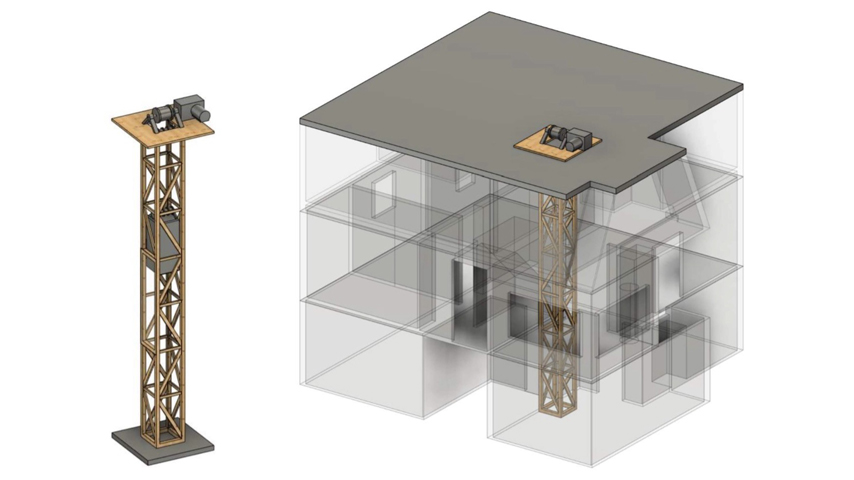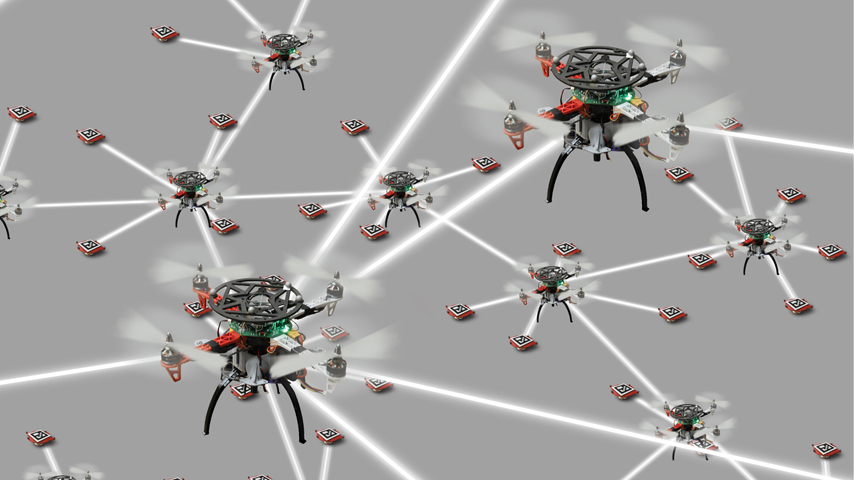The Design Challenges of Deep-Ocean Engineering
The Design Challenges of Deep-Ocean Engineering


Deep-ocean environments have been extremely challenging for submergence vessels–until now.
Deep ocean navigation and exploration is dark, dangerous, and incredibly challenging work. The harsh, corrosive environment presents hostile conditions and crushing pressures that severely challenge mechanical engineering design. For example, near Guam, 36,000 feet beneath the surface of the ocean in the Mariana Trench, the pressure from the water is eight tons per square inch, about a thousand times the standard atmospheric pressure at sea level (and equivalent of 100 adult elephants standing on a person's head).
Alvin, built in 1964 by General Mills Electronics Group (and owned by the U.S. Navy and operated by Woods Hole Oceanographic Institution), propelled deep-ocean exploration forward. In July 2022, Alvin reached a record-breaking depth of 6,453 meters (about four miles) in the Puerto Rico Trench—made possible by a $50-million upgrade that included titanium variable ballast spheres, high-quality video imaging, manipulator arm, more powerful thrusters, and an integrated command-and-control system.
“There have been countless advancements in deep-sea engineering in recent years, ranging from deep-sea manned submersibles to fiber-tethered-under-ice vehicles,” said Molly Curran, a mechanical engineer at the Submergence Lab at Woods Hole Oceanographic Institution. She works on the design and operation of deep-sea robotic systems, including remotely operated vehicles, autonomous vehicles, and deep-sea samplers.
Other key advancements for submergence vessels are cameras, sensors, controllers, syntactic foam, software, control systems, and pressure-rated materials. “We are constantly pushing the boundary of innovation,” Curran continued. “Since we are a research institution, we don’t spend as much time making things perfect and beautiful, but rather pushing things to the limit and designing ‘the first of its kind’ to excel scientific ocean research.”
Technology advancements are currently driven by a combination of hardware, software, and everything in between. “All the pieces must come together to reach the deep ocean,” said Curran. “A single failure in any aspect of the complicated system could be catastrophic, or at the very least, end a mission.”
Designing equipment to withstand the extremely harsh environment of the deep sea is a huge challenge. Aside from the cold, dark, high-pressure environment, communication to the topside vehicle can be extremely difficult, and absolutely vital for a smooth mission. However, when operating high-tech robotic vehicles, the nature of the work (such as under ice) does not allow the use of conventional cables, or tethers, to control the robots.
“Other methods of communication and navigation used in air, such a radio waves, satellite navigation, Wi-Fi, and GPS, won’t work under water,” Curran said. “Similarly, underwater acoustic communications won’t work in air. On top of that, acoustics in the ocean may differ from ship to ship and mission to mission, making it more of a challenge. Any engineer working in deep-sea robotics will tell you, ‘Don’t put anything over the side that you need back.’”
“Much of what we do, in some form, has not been done before,” Curran said. “Ship time can be hard to get, so it is critical the systems are reliable by the time of the expedition. On the other hand, there is only so much testing that can be done in a tank or from shore. For example, there is no pressure chamber large enough to test our bigger deep-sea robots, so all the individual components are tested in smaller chambers before being mounted on the vehicle. Testing and communication systems are also vital for proper operation and activation of undersea instrumentation, which can perform a huge variety of measurements.
A group of engineers from NASA’s Johnson Space Center in Houston left NASA to form their own robotics company called Nauticus Robotics. One of their first projects was building a shape-changing submersible robot. Whether a robot is working in space or on the ocean floor, the operator is far away and may be out of communication. Therefore the robot must be able to figure out its environment and navigate around obstacles. Called “Aquanaut,” the robot has tendon-powered hands, high-speed joint controllers, miniaturized load cells, advanced optical systems, force sensors, image-recognition software, and control algorithms. When it reaches its destination, Aquanaut’s shell opens, two arms with claw hands swing out, and Aquanaut is ready for business.
Woods Hole Oceanographic Institution is also working with NASA’s Jet Propulsion Laboratory to develop a new class of autonomous robotic systems called Orpheus. The vehicle is being designed to withstand 16,000 psi and also navigate the seafloor. The harsh environments of our own ocean are great analogs for what we might experience on other ocean worlds in our solar system. “We've design Orpheus to not only enable us to gather scientific data of our own ocean, but to work as a test platform for doing the same thing space,” Curran said.
Scientists at NASA know there are liquid oceans on other moons in our solar system. Some of these liquid oceans have extremely high pressures, similar to the deepest part of our Earth’s ocean. “These liquid bodies in our solar system are also covered by thick sheets of ice,” Curran said. “Using our own deep, dark, cold, ice-covered oceans is the best analogy for exploring other oceans in our solar system. We worked a lot with NASA scientists and engineers to develop technology for these hard-to-reach environments as a stepping stone to one day exploring these other liquid oceans in the solar system.”
Mark Crawford is a science and technology writer in Corrales, N.M.
Alvin, built in 1964 by General Mills Electronics Group (and owned by the U.S. Navy and operated by Woods Hole Oceanographic Institution), propelled deep-ocean exploration forward. In July 2022, Alvin reached a record-breaking depth of 6,453 meters (about four miles) in the Puerto Rico Trench—made possible by a $50-million upgrade that included titanium variable ballast spheres, high-quality video imaging, manipulator arm, more powerful thrusters, and an integrated command-and-control system.
“There have been countless advancements in deep-sea engineering in recent years, ranging from deep-sea manned submersibles to fiber-tethered-under-ice vehicles,” said Molly Curran, a mechanical engineer at the Submergence Lab at Woods Hole Oceanographic Institution. She works on the design and operation of deep-sea robotic systems, including remotely operated vehicles, autonomous vehicles, and deep-sea samplers.
Other key advancements for submergence vessels are cameras, sensors, controllers, syntactic foam, software, control systems, and pressure-rated materials. “We are constantly pushing the boundary of innovation,” Curran continued. “Since we are a research institution, we don’t spend as much time making things perfect and beautiful, but rather pushing things to the limit and designing ‘the first of its kind’ to excel scientific ocean research.”
More for You: Advances in Underwater Robots
Technology advancements are currently driven by a combination of hardware, software, and everything in between. “All the pieces must come together to reach the deep ocean,” said Curran. “A single failure in any aspect of the complicated system could be catastrophic, or at the very least, end a mission.”
Designing equipment to withstand the extremely harsh environment of the deep sea is a huge challenge. Aside from the cold, dark, high-pressure environment, communication to the topside vehicle can be extremely difficult, and absolutely vital for a smooth mission. However, when operating high-tech robotic vehicles, the nature of the work (such as under ice) does not allow the use of conventional cables, or tethers, to control the robots.
“Other methods of communication and navigation used in air, such a radio waves, satellite navigation, Wi-Fi, and GPS, won’t work under water,” Curran said. “Similarly, underwater acoustic communications won’t work in air. On top of that, acoustics in the ocean may differ from ship to ship and mission to mission, making it more of a challenge. Any engineer working in deep-sea robotics will tell you, ‘Don’t put anything over the side that you need back.’”
Watch Our Video: Plying the Depths
This is why testing is one of the most critical aspects to working in the deep ocean.“Much of what we do, in some form, has not been done before,” Curran said. “Ship time can be hard to get, so it is critical the systems are reliable by the time of the expedition. On the other hand, there is only so much testing that can be done in a tank or from shore. For example, there is no pressure chamber large enough to test our bigger deep-sea robots, so all the individual components are tested in smaller chambers before being mounted on the vehicle. Testing and communication systems are also vital for proper operation and activation of undersea instrumentation, which can perform a huge variety of measurements.
A group of engineers from NASA’s Johnson Space Center in Houston left NASA to form their own robotics company called Nauticus Robotics. One of their first projects was building a shape-changing submersible robot. Whether a robot is working in space or on the ocean floor, the operator is far away and may be out of communication. Therefore the robot must be able to figure out its environment and navigate around obstacles. Called “Aquanaut,” the robot has tendon-powered hands, high-speed joint controllers, miniaturized load cells, advanced optical systems, force sensors, image-recognition software, and control algorithms. When it reaches its destination, Aquanaut’s shell opens, two arms with claw hands swing out, and Aquanaut is ready for business.
Woods Hole Oceanographic Institution is also working with NASA’s Jet Propulsion Laboratory to develop a new class of autonomous robotic systems called Orpheus. The vehicle is being designed to withstand 16,000 psi and also navigate the seafloor. The harsh environments of our own ocean are great analogs for what we might experience on other ocean worlds in our solar system. “We've design Orpheus to not only enable us to gather scientific data of our own ocean, but to work as a test platform for doing the same thing space,” Curran said.
Take Our Quiz: Autonomy Under the Surface
Scientists at NASA know there are liquid oceans on other moons in our solar system. Some of these liquid oceans have extremely high pressures, similar to the deepest part of our Earth’s ocean. “These liquid bodies in our solar system are also covered by thick sheets of ice,” Curran said. “Using our own deep, dark, cold, ice-covered oceans is the best analogy for exploring other oceans in our solar system. We worked a lot with NASA scientists and engineers to develop technology for these hard-to-reach environments as a stepping stone to one day exploring these other liquid oceans in the solar system.”
Mark Crawford is a science and technology writer in Corrales, N.M.




